Categories: Sharing experience, Autonomous power supply
Number of views: 11275
Comments on the article: 0
How to choose a solar charge controller
Let's look at an example of a sequence of steps to select a controller.
Acquaintance with offers
First of all, through search engines, for example, Yandex and Google, I collect information on all charge controllers that online stores offer in the country. Of course, I draw attention to the proposals in my region. If prices including delivery in the home region are comparable to prices in other areas of the country, I take such suggestions into account. If they are "transcendental" - I do not consider at all.
In my situation, there were no such offers nearby and my choice was somewhat “facilitated”. I will not give examples of stores that fell into my field of view, so that, God forbid, not impose my subjective opinion, moreover, do not provoke you to make a mistake if, suddenly, my choice is not correct.
I will say only one thing. In any case, before placing an order, you should have at least two communication sessions with representatives of the selected online store. By phone, through the contact form, e-mail message, etc., it is better if through several communication channels. This is important if we are not talking about a store with an unconditional brand and a decent reputation.
Firstly, you will see how quickly they respond to your request, and if at all. Secondly, you can clarify some questions and understand who you are dealing with. And thirdly, new acquaintances and contacts will only benefit the cause.
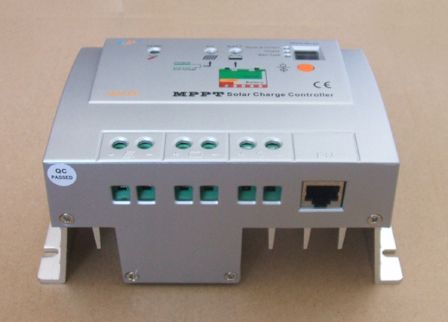
But back to our ..., of course, battery charge controllers. There were not so many offers, especially since some of the sellers, apparently, did not even have an idea about what they were selling. Technical specifications are not translated correctly from the manufacturer’s language, and sometimes are not completely indicated. The value of some parameters is incorrect. The price is not indicated (not even considering!).
One way or another, the picture of the manufacturers of charge controllers has developed for me as follows:
-
Morningstar Corporation, USA;
-
Beijing Epsolar Technology, China;
-
OutBack Power Systems, USA;
-
China Ningbo Star Solar, China;
-
Professional Solar Products, USA;
-
Steca Solarelektronik, Germany;
-
Xantrex Technology, USA.

Of course this is not a complete list, but it contains only those whose products I have read at least something positive. If the information was neither positive nor negative, the manufacturer was not on the list.
Now more specifically about products and closer to my needs with capabilities.
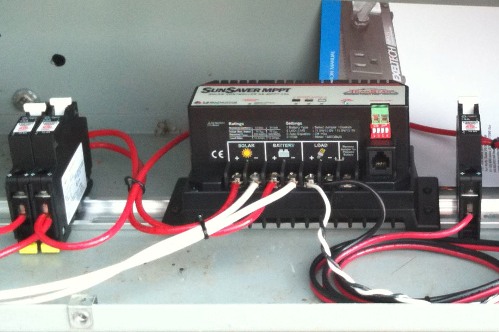
Preselection
I have already said that in the article mentioned above about my intention to install an MPPT controller, therefore, we will only compile a list of devices that satisfy my needs from controllers with the MPPT function. This is how it will turn out:
-
Morningstar SunSaver MPPT;
-
EPSolar Tracer MPPT 2215RN 12 / 24V 20A;
-
Outback FlexMax-60;
-
Juta MPPT 20A;
-
Prosolar SunStar MPPT SS-40CX 40A;
-
Steca Solarix MPPT 2010;
-
Xantrex XW-MPPT60-150.
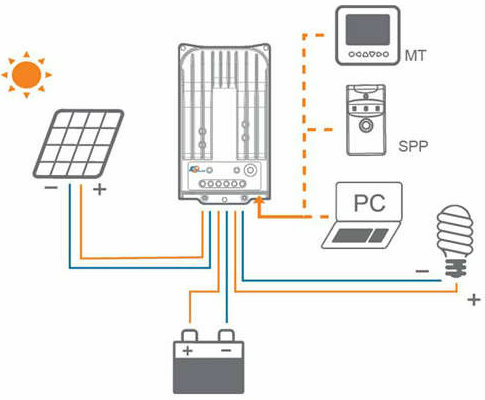
Now even a quick look at their parameters, I see that the three controllers from the list for my system are simply redundant. For example, Outback FlexMax-60, Prosolar SunStar MPPT SS-40CX 40A, Xantrex XW-MPPT60-150 have the ability to work on 12, 24, 36, 48, 60 V systems, but this is still an awesome prospect for me. Such a need may never happen, and you don’t really want to pay for such an opportunity three times more. No, they will work and even in the long term, in the case of building up the system they will not have to be changed, but, again, they will pay so much ...
Remain on the list:
-
Morningstar SunSaver MPPT;
-
EPSolar Tracer MPPT 2215RN 12 / 24V 20A;
-
Juta MPPT 20A;
-
Steca Solarix MPPT 2010.

We pay attention to the load current of Steca Solarix MPPT 2010. It is 10A. At the moment, my consumption is within 10A, but this is already the immediate prospect. So preference is given to those battery charge controllers whose load current is higher, with all other parameters being approximately equal. At Morningstar SunSaver MPPT, the parameters are similar to the other two controllers, but the price is higher.
“And there are two of them left”:
-
EPSolar Tracer MPPT 2215RN 12 / 24V 20A;
-
Juta MPPT 20A.
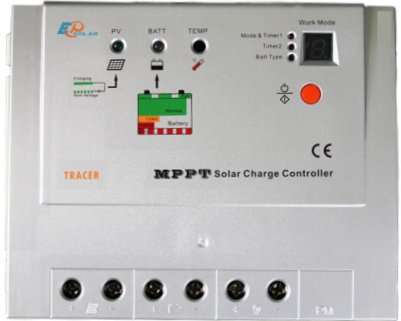
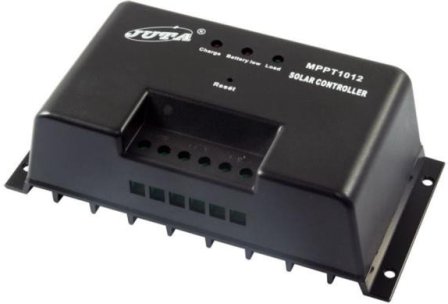
Checking for protection
The solar charge controller is required to provide a wide variety of protections. This makes it possible to operate the device with a greater degree of reliability. These protections include:
-
from overcharging; from deep discharge;
-
from polarity reversal;
-
from short circuits;
-
surge input;
-
from overheating;
-
from lightning discharges;
-
from the discharge of AB through SB at night.
This is not a complete list. This list may be different for different controllers. Producers, based on the circuitry of their offspring, endow it with certain protections. You need to know whether your controller is protected by one circuit or another or not.
Let's compare what electronic protections are provided for the remaining battery charge controllers. All protections are provided for both one controller and another. I just pay attention to such things as preventing the discharge of AB through the SB at night, electronic fuse, protection against lightning by a varistor, protection against overheating.
The listed protections are provided in the EPSolar Tracer MPPT 2215RN 12 / 24V 20A, but are not specified in the Juta MPPT 20A. Perhaps some of these protections are simply not indicated by the sellers, but I’m not going to guess, and even more so, I don’t like to be forced to contact me to find out something. For example, they write: “Contact the manager to find out the price.” I pass by, I can’t even stop looking.
Parameter Reconciliation
Well, the last. Once again we will check the parameters of the two controllers for compliance with my conditions and, moreover, compare them with each other. These are the following options:
-
System voltage, (V);
-
Maximum charging current, (A);
-
Maximum load current, (A);
-
Max. input current from SB, (A);
-
Maximum input voltage at the terminals of the solar battery, (V);
-
The maximum power of the solar module at 24V, (W);
-
Range of tracking the point of maximum power, (V);
-
Own current consumption, (mA);
-
Working temperature (° C);
-
Degree of protection.
Unlike Juta, the Tracer system voltage is selected automatically, 12 V or 24 V, depending on what voltage is used in the system. This is a significant plus, I may need it. Once already had to change the voltage of my system.
The following two parameters are the same for them, but the maximum current at the input from the solar panels in Juta is not specified. Poorly. While we move on.
The maximum input voltage at the terminals of the solar battery. The Juta has 65 V, the Tracer has 150 V. Both of them suit me.
Considering this parameter, I drew attention to what I did not see immediately. There is also an EPSolar Tracer MPPT 2210RN 12 / 24V 20A controller with the same parameters as the EPSolar Tracer MPPT 2215RN 12 / 24V 20A. The difference is only in the maximum input voltage at the terminals of the solar battery. It has 100 V. It suits me. Therefore, we will now consider the Tracer MPPT 2210RN 12 / 24V 20A.
The maximum power of the solar module at 24V of this controller, 520 W, also suits. For some reason Juta is not listed. The degree of protection for Juta is excessive for me, IP 55. The controller will be installed in a dry, warm room, so IP30, which Tracer has, is quite suitable for me.
Further comparison does not make sense anymore, and clarification of parameters not specified either. I was convinced that I was quite happy with the parameters, protections and price: the EPSolar Tracer MPPT 2210RN 12 / 24V 20A battery charge controller.
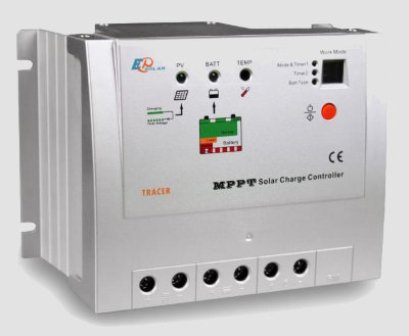
Now it makes sense once again to go through online shopping and compare prices. It is necessary to remember such a thing, preference is not always given to a lower price. In those stores where the seller’s response is immediate, and there is the opportunity to get a full and competent consultation, it’s not a pity to make a purchase at a higher price. If only she (price) was not transcendental origin.
I hope this article helped you. If one of you makes the selection of devices using a different technique, let me know in the comments. I will be glad to adopt the experience.
Boris Tsupilo
See also at i.electricianexp.com
:
